The attentive reader will remember Sara's comment of Chania, a town on Crete that she visited last September: "When I could finally tear my eyes away from the fountain, I walked forward a couple of meters and lost my heart to Chania forever." Perugia, though totally different from Chania, had a similar effect on me. The capital of Umbria and located in rolling hills, it was a dream to walk through. Our apartment was right in the middle of the historic city center. A word of warning to anyone planning to stay in the historic center of an ancient hill town: it'll be at the top of the hill, and the hill will be too steep for trains to get anywhere near the top. Everything else about the situation is lovely, but the 25-minute hike from the train station carrying all your luggage is not.
Below are two views that awaited us when we finally arrived.


In the top photo I'm staring at a Roman aqueduct that was right outside our windows (which were the green shutters at the top of the photo). Today people just stroll along the aqueduct. The bottom photo is a look back up the hill toward the main city center and a beautiful archway that now is a bus road. We climbed these stairs several times per day, helping to burn off a portion of the gelato we ate. At the beginning of our trip as we were descending the 79 steps out of our apartment, Sara remarked that upon our return we will be so out of shape that climbing back to our apartment could be the end of us. Ha!
Below are two views that awaited us when we finally arrived.


In the top photo I'm staring at a Roman aqueduct that was right outside our windows (which were the green shutters at the top of the photo). Today people just stroll along the aqueduct. The bottom photo is a look back up the hill toward the main city center and a beautiful archway that now is a bus road. We climbed these stairs several times per day, helping to burn off a portion of the gelato we ate. At the beginning of our trip as we were descending the 79 steps out of our apartment, Sara remarked that upon our return we will be so out of shape that climbing back to our apartment could be the end of us. Ha!
These pictures don't really convey why I love Perugia so much. Compared with many other towns we've visited, the colors of Perugia were rather bland. It is the topology, rather than the palette, that made me love walking around Perugia. You could never have a bike in the city for all of the staircases, but just going up and down narrow roads and encountering huge vistas of the Umbrian countryside as the city starts downward--that's what made Perugia special for me. We were surprised to find that the city has some 6 or 7 escalators to help people up from the lower regions to the top, a welcome amenity when climbing from the train station with our suitcase.
We were in Perugia so that I could do some measurements on several paintings in the Galleria Nazionale dell'Umbria. The building in which the Galleria is located was formerly a palace; today, two (of the five) floors contain the gallery and the others government offices. Below is part of the cool arched ceiling of the first floor. (The amazing pizza place we ate at three times had the same kind.)

Here is the intricately carved main entry to the gallery.
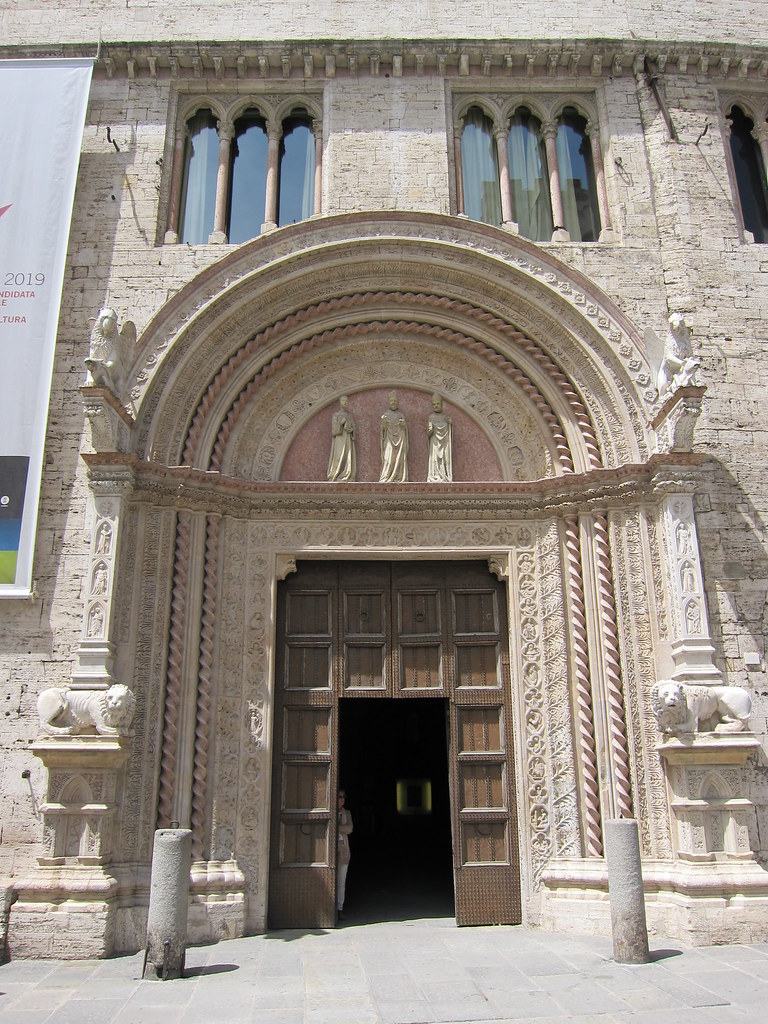
Just up the street from the gallery, a fountain in front of the Cathedral (rather unadorned due to the untimely end of construction funds somewhere between the 14th and 16th centuries).
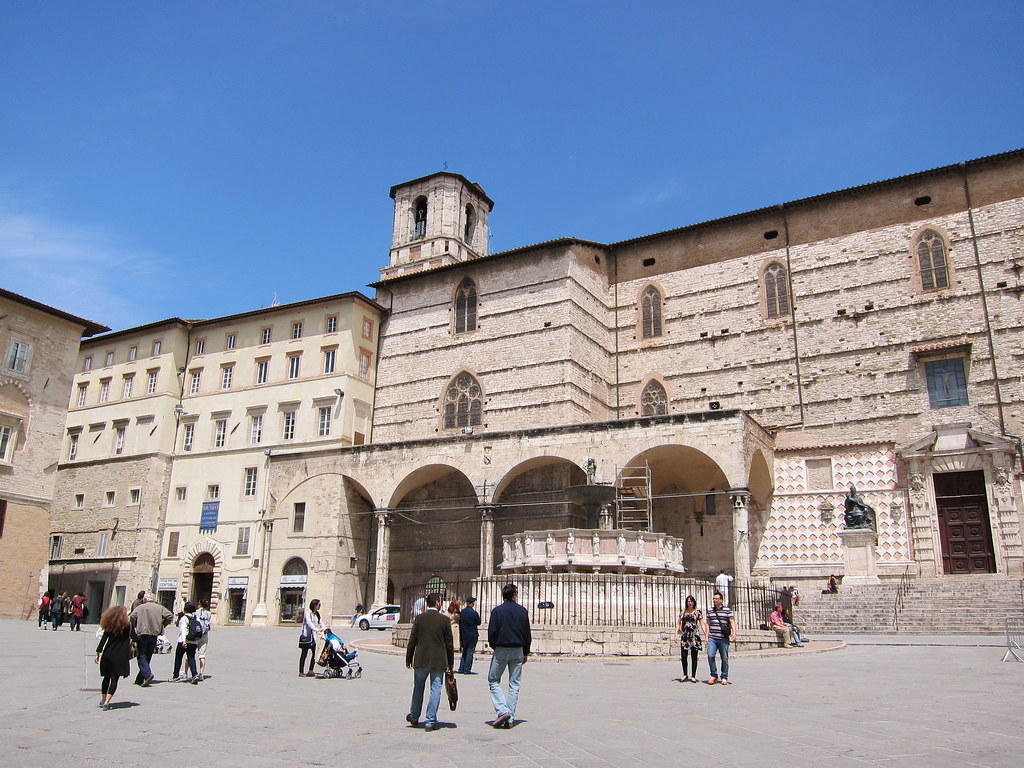
The cathedral construction fund did manage to squeeze in a little outdoor pulpit, though. Perhaps to preach to all the weekend revelers? The pink-and-white portion is a test portion indicating what the whole thing was supposed to look like.
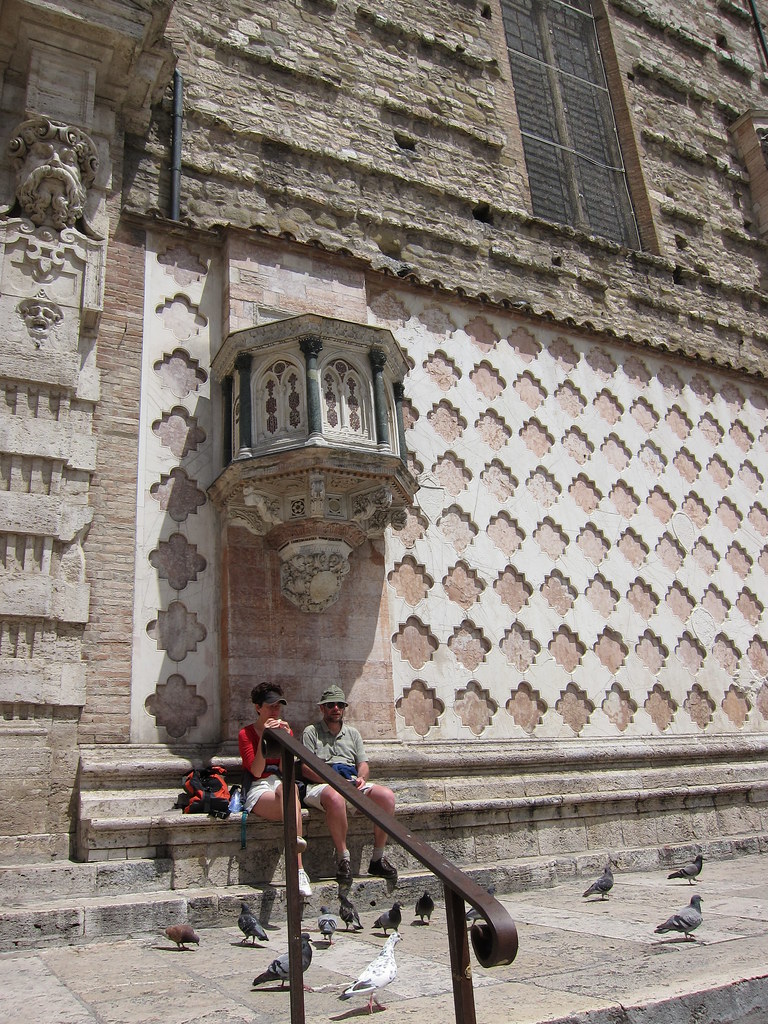
Sara found this cool lamppost outside the post office. Stained glass on a lamppost!
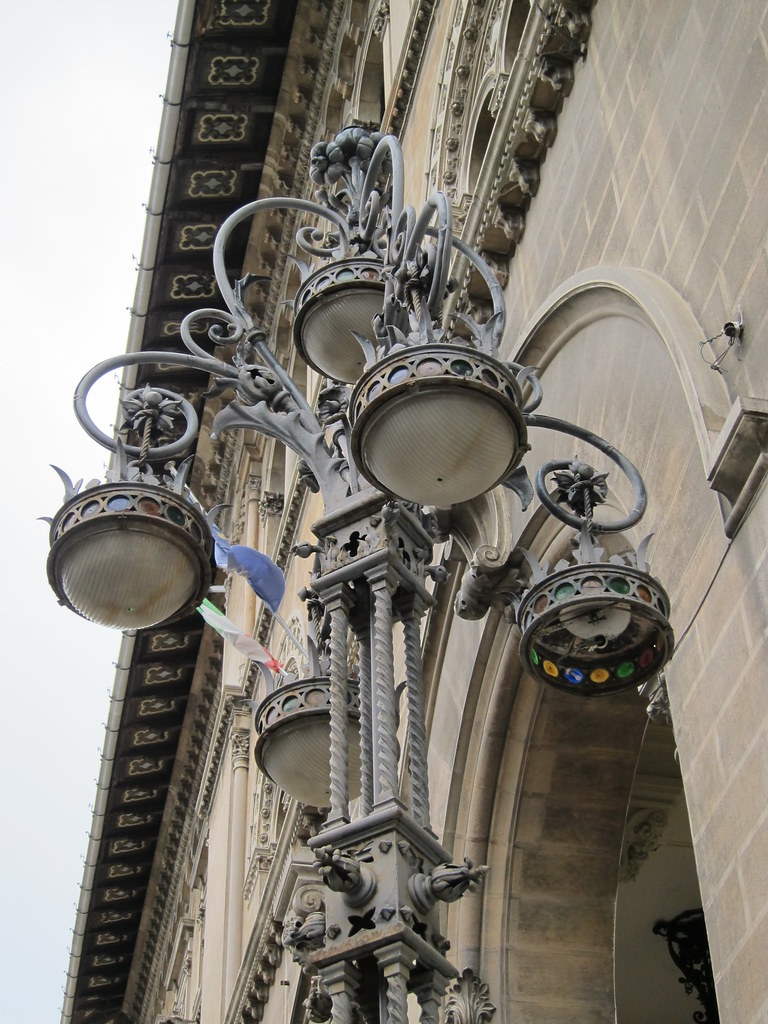
On Sunday morning we took a stroll to the opposite side of town and found the Church of Sant'Angelo, an old temple (which my colleague Federica kept calling the "Templito"). Old, in this case, means the fifth or sixth century, but presumably built on the ruins of an even older Roman temple--one that, simultaneously with paganism, fell into disrepair. Though the interior was cool it wasn't terribly eye-catching; I was more awed by the 6th century satellite dish.

Adjacent to the Temple of Sant'Angelo was this tower which we were able to climb. It contained a small museum depicting the evolution of the city's defenses under the Etruscans and Romans and later. The reason there are so many walls and archways all over the city is that as it grew its rulers kept building more.

However, the real selling point for the tower is the view of the city:
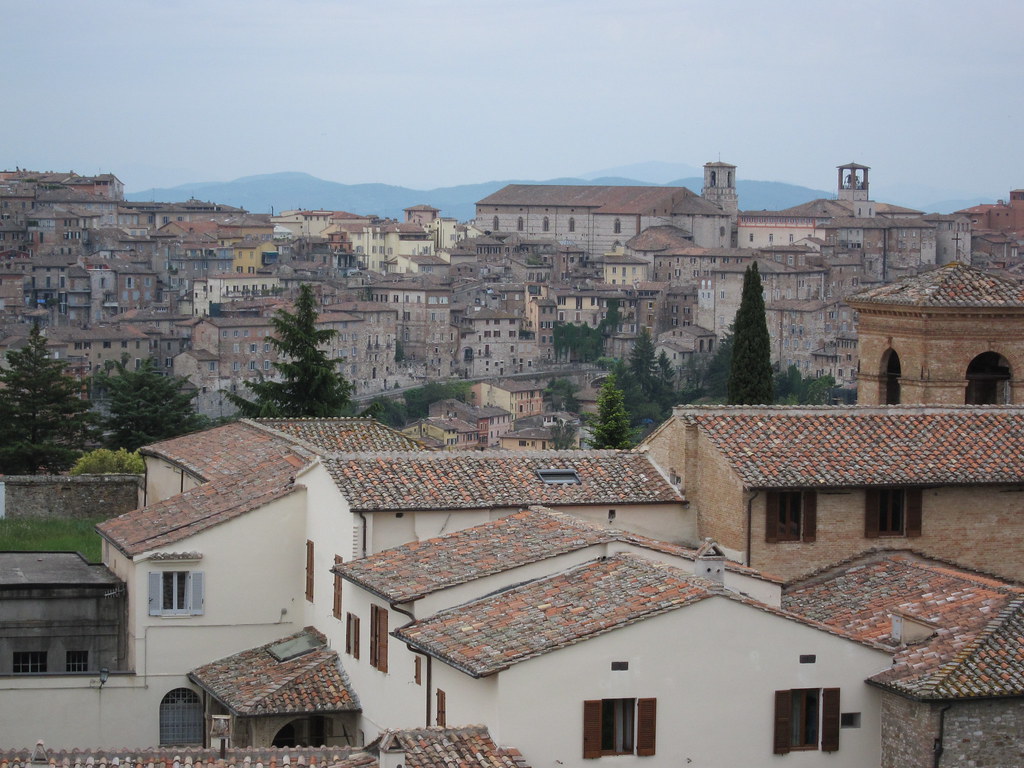
At the other end of the city from the Temple of Sant'Angelo, the fortress of Perugia (Rocca Paolina) once separated and today, using some of the escalators I mentioned previously, links the lower parts of the city with the main center. It really took us by surprise when we first found it--it seems like an abandoned subway station: no subways, but lots of storefront space. There were, in fact, a few stores there, though most of it is reserved for the Christmas market. One small nook was converted to an urban forest in an attempt to raise awareness of environmental causes. There was even a soundtrack of forest sounds, one of which was a very sudden thunderclap that startled me so badly I practically leapt into Sara's arms.

The rest of the photos I can't speak for from personal experience, as Sara took them while I was working in the gallery. From her explanations to me, this is a beautiful view en route to yet another corner of the city, this one marked by San Pietro's Church, whose tower is seen through the arch.

Here is an olive tree and fountain in a cloister of San Pietro. Sara couldn't go in the church, but the cloister gardens were open.
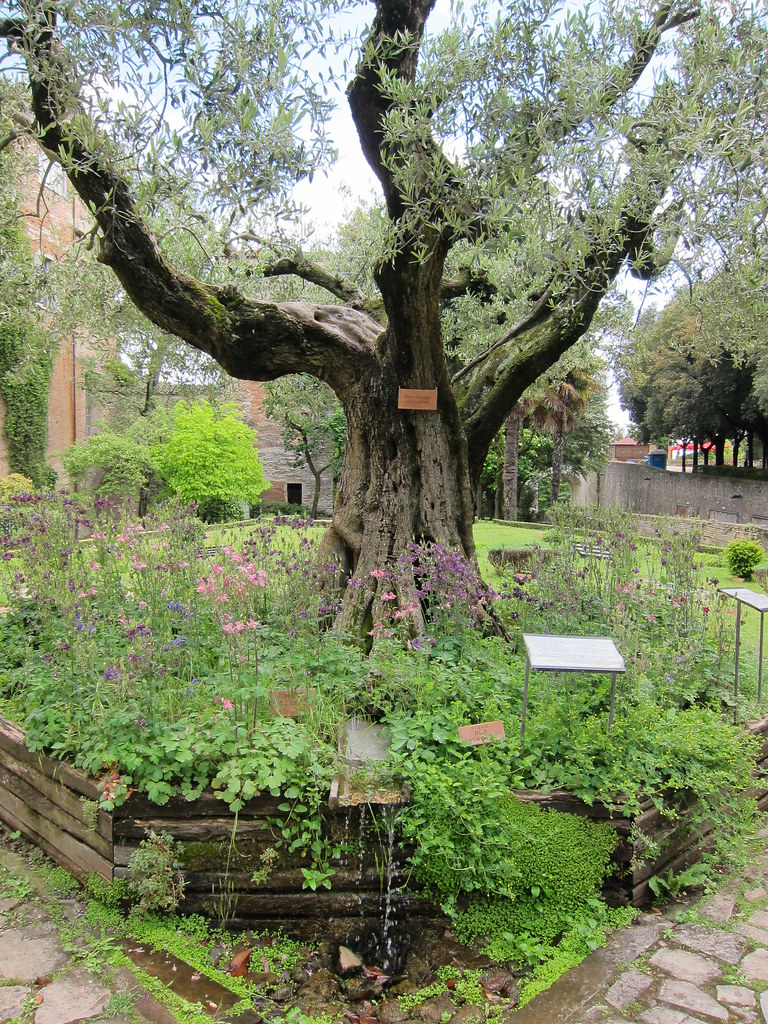
Sara came with me to the gallery on Friday to meet my colleagues there, to get free admission to the gallery (!), and to get recommendations for things to see in Perugia for the days it rained. Federica suggested the archaeological museum, which is funny because later she told me, "there's nothing there to see, really. Just a bunch of old stuff. We've got lots of old stuff already." Well, here are some photos of old stuff (captions by Sara).
An ancient-yet-surprisingly-modern-looking blueprint. Good job, Romans.
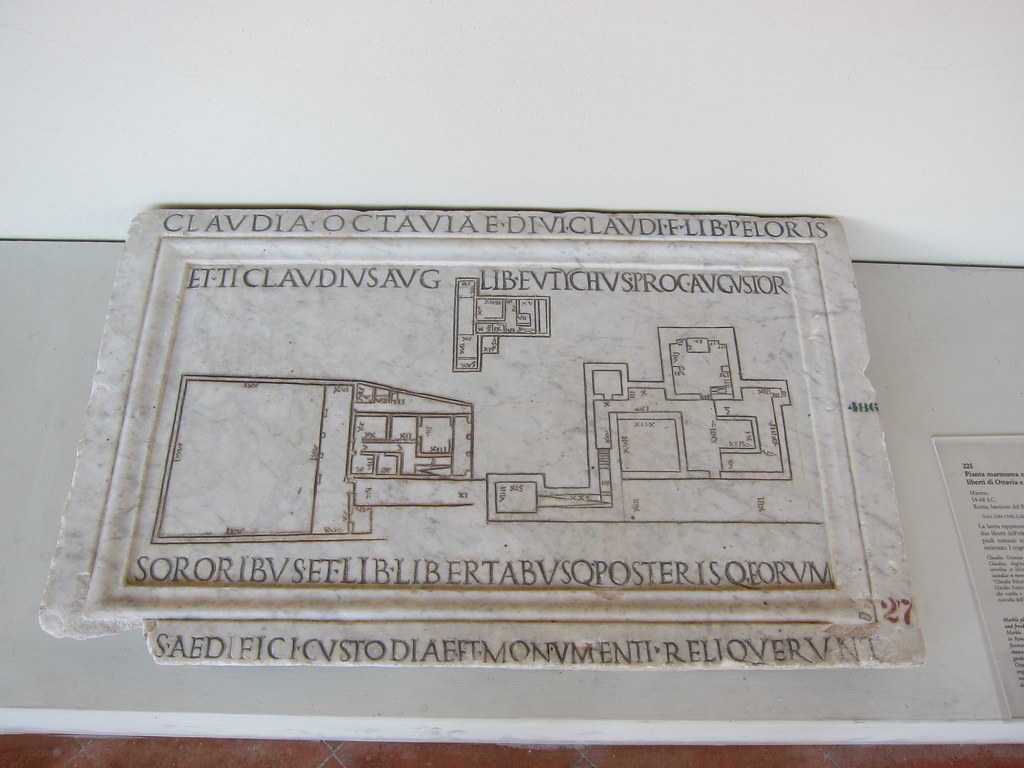
This tablet shows the Etruscan script. Sara commented that the museum did a nice job illustrating the evolution of writing systems in the Perugia area from Etruscan to Roman.
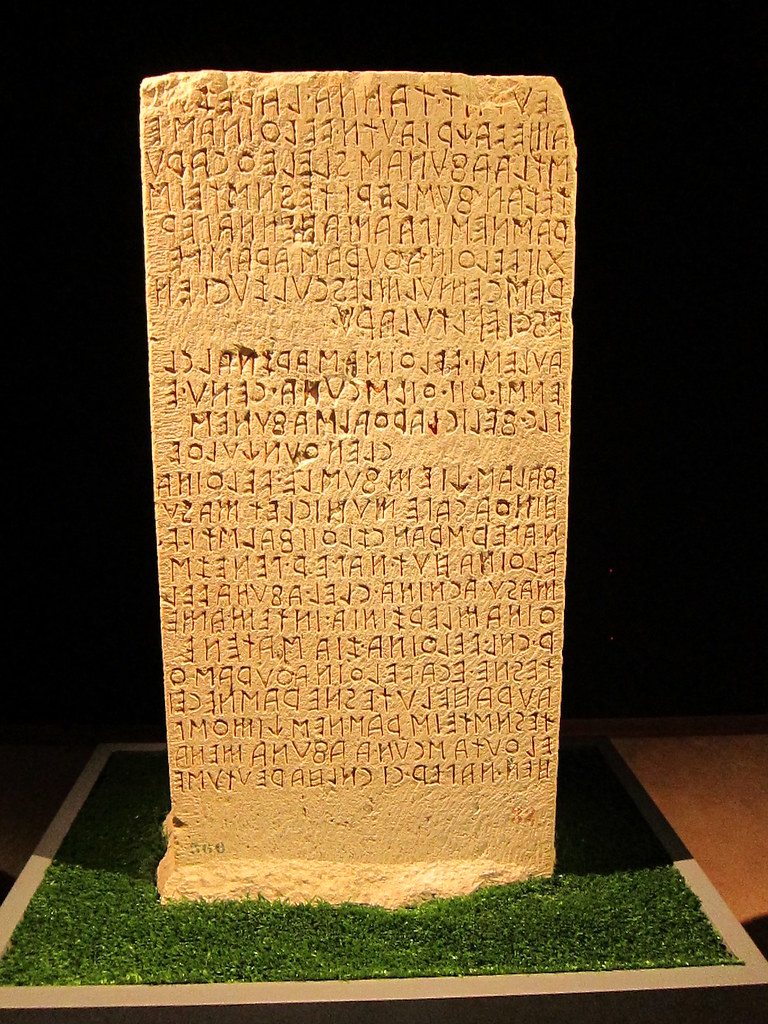
Two arches to cap off our tour della Perugia: an ancient Roman one, complete with busts (and part of Rocca Paolina),
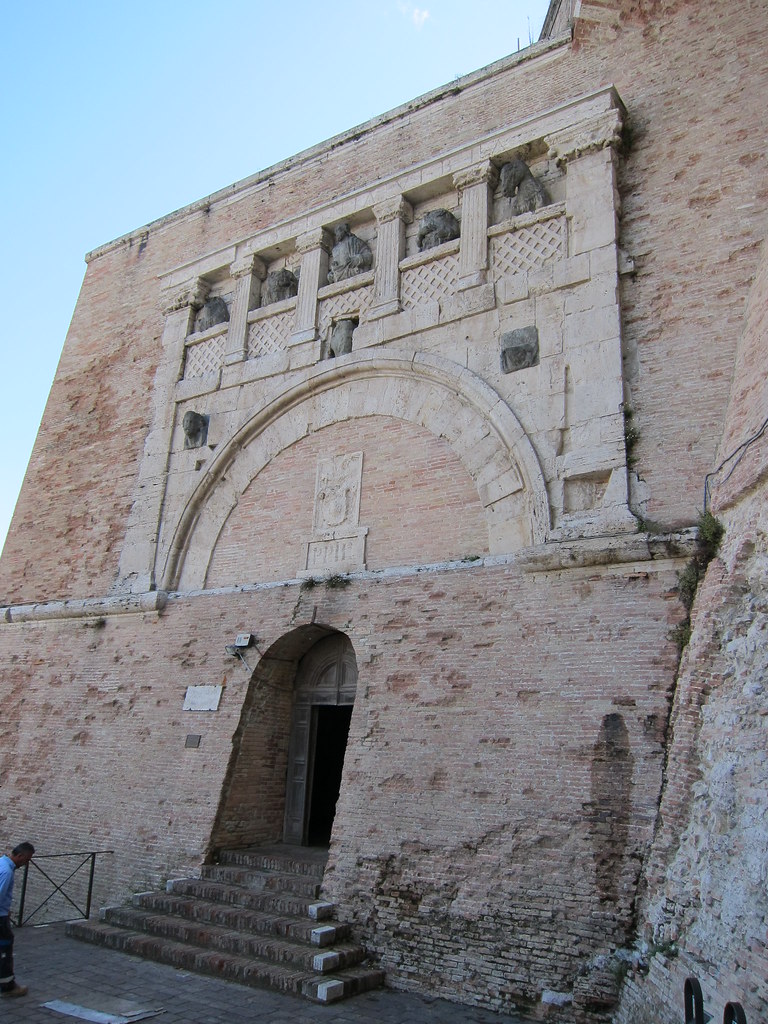
and the Etruscan Arch, dating to the third century BC and likely under construction for the entirety of the 21st AD.

Perugia seemed a perfect mix of everything I love about Europe: it's old, it has great food, a good nightlife, a small town on the hills that is still close to big cities (Florence and Rome). It was an excellent place to "work" for a week.
We were in Perugia so that I could do some measurements on several paintings in the Galleria Nazionale dell'Umbria. The building in which the Galleria is located was formerly a palace; today, two (of the five) floors contain the gallery and the others government offices. Below is part of the cool arched ceiling of the first floor. (The amazing pizza place we ate at three times had the same kind.)

Here is the intricately carved main entry to the gallery.

Just up the street from the gallery, a fountain in front of the Cathedral (rather unadorned due to the untimely end of construction funds somewhere between the 14th and 16th centuries).

The cathedral construction fund did manage to squeeze in a little outdoor pulpit, though. Perhaps to preach to all the weekend revelers? The pink-and-white portion is a test portion indicating what the whole thing was supposed to look like.

Sara found this cool lamppost outside the post office. Stained glass on a lamppost!

On Sunday morning we took a stroll to the opposite side of town and found the Church of Sant'Angelo, an old temple (which my colleague Federica kept calling the "Templito"). Old, in this case, means the fifth or sixth century, but presumably built on the ruins of an even older Roman temple--one that, simultaneously with paganism, fell into disrepair. Though the interior was cool it wasn't terribly eye-catching; I was more awed by the 6th century satellite dish.

Adjacent to the Temple of Sant'Angelo was this tower which we were able to climb. It contained a small museum depicting the evolution of the city's defenses under the Etruscans and Romans and later. The reason there are so many walls and archways all over the city is that as it grew its rulers kept building more.

However, the real selling point for the tower is the view of the city:

At the other end of the city from the Temple of Sant'Angelo, the fortress of Perugia (Rocca Paolina) once separated and today, using some of the escalators I mentioned previously, links the lower parts of the city with the main center. It really took us by surprise when we first found it--it seems like an abandoned subway station: no subways, but lots of storefront space. There were, in fact, a few stores there, though most of it is reserved for the Christmas market. One small nook was converted to an urban forest in an attempt to raise awareness of environmental causes. There was even a soundtrack of forest sounds, one of which was a very sudden thunderclap that startled me so badly I practically leapt into Sara's arms.

The rest of the photos I can't speak for from personal experience, as Sara took them while I was working in the gallery. From her explanations to me, this is a beautiful view en route to yet another corner of the city, this one marked by San Pietro's Church, whose tower is seen through the arch.

Here is an olive tree and fountain in a cloister of San Pietro. Sara couldn't go in the church, but the cloister gardens were open.

Sara came with me to the gallery on Friday to meet my colleagues there, to get free admission to the gallery (!), and to get recommendations for things to see in Perugia for the days it rained. Federica suggested the archaeological museum, which is funny because later she told me, "there's nothing there to see, really. Just a bunch of old stuff. We've got lots of old stuff already." Well, here are some photos of old stuff (captions by Sara).
 |
| This guy is incredibly lifelike. I now know just how Etruscans looked. And I really like the lions. They've got to be the saddest, humblest lions I've ever seen. |
An ancient-yet-surprisingly-modern-looking blueprint. Good job, Romans.

This tablet shows the Etruscan script. Sara commented that the museum did a nice job illustrating the evolution of writing systems in the Perugia area from Etruscan to Roman.

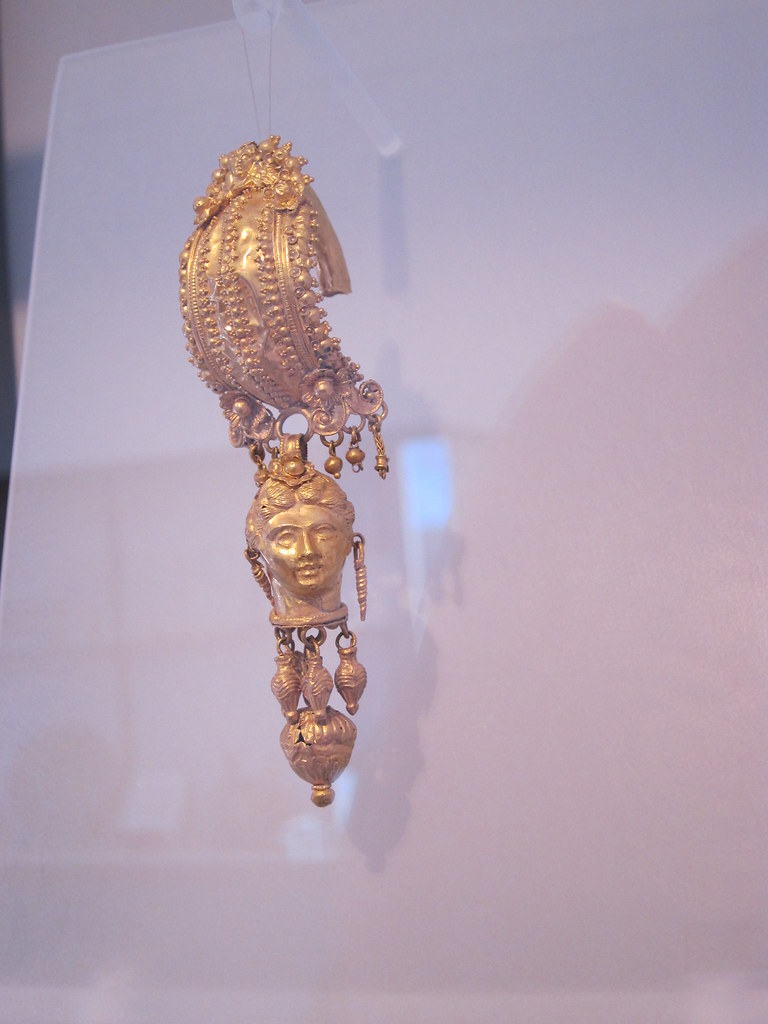 |
| I always find the ancient jewelry. |
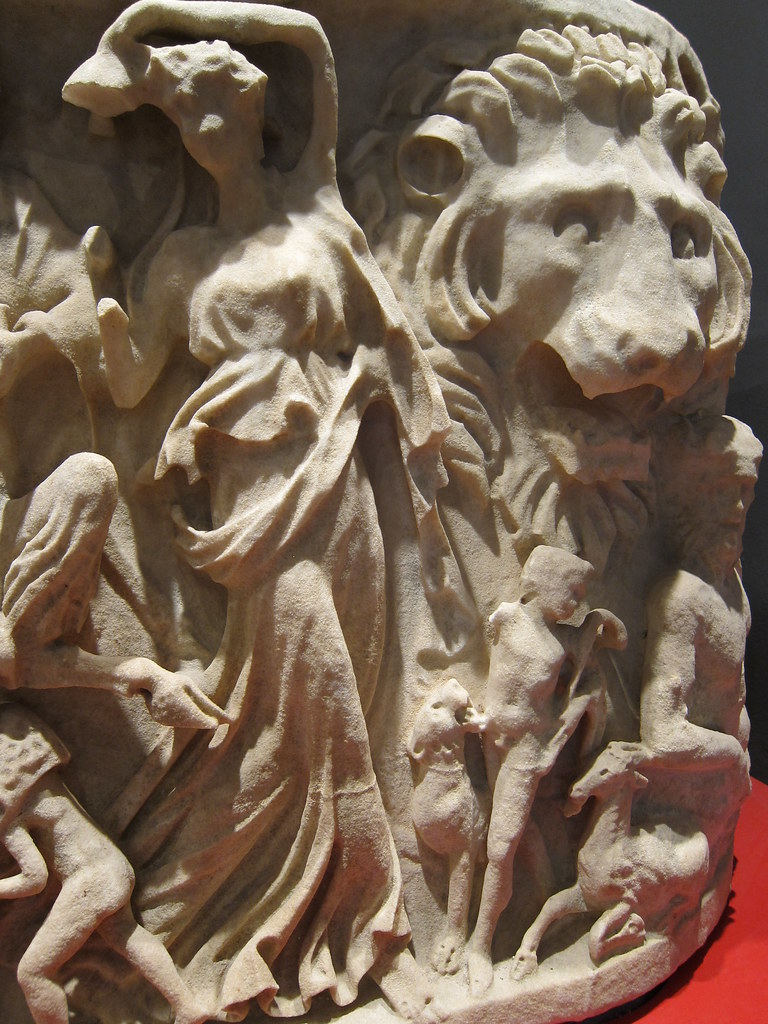 |
| The way this underworld scene has eroded makes it look even more hellish. |
Two arches to cap off our tour della Perugia: an ancient Roman one, complete with busts (and part of Rocca Paolina),

and the Etruscan Arch, dating to the third century BC and likely under construction for the entirety of the 21st AD.

Perugia seemed a perfect mix of everything I love about Europe: it's old, it has great food, a good nightlife, a small town on the hills that is still close to big cities (Florence and Rome). It was an excellent place to "work" for a week.

Really like the cityscape pics here, the ramps, walls, corridors and halls, stairs, bridges and always the outdoor cafe seating. Absolutely awesome old tree and garden. Regarding the reclining dude: I doubt that the Etruscan who commissioned it looked like that. (Etruscan speaking to the artist: "There's an extra hundred in it for you if you shave off some belly and add a nobler chin.")
ReplyDeleteWhy no pics of this alleged nightlife?
I'm not so sure about the Etruscan paying off the sculptor--if he had, why didn't he have him fix that atrocious hair?
DeleteAnd our idea of nightlife is a restaurant (or, more honestly, a gelateria) that is open past 9. We don't get many things open late in Germany, so seeing a store open till midnight (12:30 on weekends!) blew our minds.